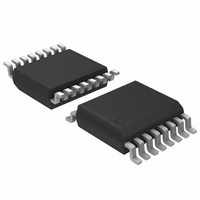ADT7473ARQZ-1R7 ON Semiconductor, ADT7473ARQZ-1R7 Datasheet - Page 25

ADT7473ARQZ-1R7
Manufacturer Part Number
ADT7473ARQZ-1R7
Description
IC THERM MON FAN CTLR 16-QSOP
Manufacturer
ON Semiconductor
Series
dBCool®r
Datasheet
1.ADT7473ARQZ-1RL.pdf
(74 pages)
Specifications of ADT7473ARQZ-1R7
Function
Fan Control, Temp Monitor
Topology
ADC, Comparator, Fan Speed Counter, Multiplexer, Register Bank
Sensor Type
External & Internal
Sensing Temperature
-40°C ~ 125°C, External Sensor
Output Type
SMBus™
Output Alarm
No
Output Fan
Yes
Voltage - Supply
3 V ~ 3.6 V
Operating Temperature
-40°C ~ 125°C
Mounting Type
Surface Mount
Package / Case
16-QSOP
Full Temp Accuracy
+/- 0.5 C
Digital Output - Bus Interface
Serial (3-Wire, 4-Wire)
Maximum Operating Temperature
+ 125 C
Minimum Operating Temperature
- 40 C
Lead Free Status / RoHS Status
Lead free / RoHS Compliant
Available stocks
Company
Part Number
Manufacturer
Quantity
Price
Company:
Part Number:
ADT7473ARQZ-1R7
Manufacturer:
ON Semiconductor
Quantity:
500
Part Number:
ADT7473ARQZ-1R7
Manufacturer:
ADI/亚德诺
Quantity:
20 000
TACH/PWM pins to a supply greater than 3.6 V. Clamping
or dividing down the voltage on these pins must be done
where necessary. Clamping these pins with a Zener diode
can also help prevent back−EMF related noise from being
coupled into the system.
drive device required. The specifications of the MOSFET
depend on the maximum current required by the fan being
driven. Typical notebook fans draw a nominal 170 mA;
therefore, SOT devices can be used where board space is a
concern. In desktops, fans can typically draw 250 mA to
300 mA each. If you drive several fans in parallel from a
single PWM output or drive larger server fans, the MOSFET
must handle the higher current requirements. The only other
stipulation is that the MOSFET have a gate voltage drive,
V
MOSFET should also have a low on resistance to ensure that
there is not significant voltage drop across the FET, which
would reduce the voltage applied across the fan and,
therefore, the maximum operating speed of the fan.
control.
signal. This assumes that the TACH signal is an
open−collector from the fan. In all cases, the TACH signal
from the fan must be kept below 3.6 V maximum to prevent
damaging the ADT7473/ADT7473−1. If uncertain as to
whether the fan used has an open−collector or totem pole
TACH output, use one of the input signal conditioning
circuits shown in the Fan Speed Measurement section.
transistor such as a general−purpose MMBT2222. While
these devices are inexpensive, they tend to have much lower
current handling capabilities and higher on resistance than
MOSFETs. When choosing a transistor, care should be taken
to ensure that it meets the fan’s current requirements.
is saturated when the fan is powered on.
Figure 35. Driving a 3−Wire Fan Using an N−Channel
GS
Many fans have internal pullups connected to the
For 3−wire fans, a single N−channel MOSFET is the only
Figure 35 shows how to drive a 3−wire fan using PWM
Figure 35 uses a 10 kW pullup resistor for the TACH
Figure 36 shows a fan drive circuit using an NPN
Ensure that the base resistor is chosen so that the transistor
< 3.3 V, for direct interfacing to the PWM output. The
ADT7473−1
ADT7473/
TACH
PWM
4.7kΩ
10kΩ
10kΩ
MOSFET
3.3V
10kΩ
12V
12V
Q1
NDT3055L
12V
FAN
1N4148
http://onsemi.com
25
speed is not switched on or off as with previous PWM
driven/powered fans. This enables it to perform better than
3−wire fans, especially for high frequency applications.
the PWM input on 4−wire fans is usually internally pulled
up to a voltage greater than 3.6 V (the maximum voltage
allowed on the ADT7473/ADT7473−1 PWM output), the
PWM output should be clamped to 3.3 V using a Zener
diode.
Driving Two Fans from PWM3
available for fan speed measurement, but only three PWM
drive outputs. If a fourth fan is used in the system, it should
be driven from the PWM3 output in parallel with the third
fan. Figure 38 shows how to drive two fans in parallel using
low cost NPN transistors. Figure 39 shows the equivalent
circuit using a MOSFET.
a matter of connecting another fan directly in parallel with
the first. Care should be taken in designing drive circuits
with transistors and FETs to ensure the PWM pins are not
required to source current and that they sink less than the
8 mA maximum current specified on the data sheet.
Because 4−wire fans are powered continuously, the fan
Figure 37 shows a typical drive circuit for 4−wire fans. As
The ADT7473/ADT7473−1 has four TACH inputs
Because the MOSFET can handle up to 3.5 A, it is simply
Figure 36. Driving a 3−Wire Fan Using an NPN
ADT7473−1
ADT7473/
ADT7473−1
ADT7473/
Figure 37. Driving a 4−Wire Fan
TACH
PWM
TACH
PWM
4.7kΩ
665Ω
Transistor
10kΩ
4.7kΩ
3.3V
10kΩ
10kΩ
3.3V
10kΩ
TACH
12V
TACH
12V 12V
12V
12V, 4−WIRE FAN
V
TACH
PWM
Q1
MMBT2222
CC
12V
FAN
1N4148











